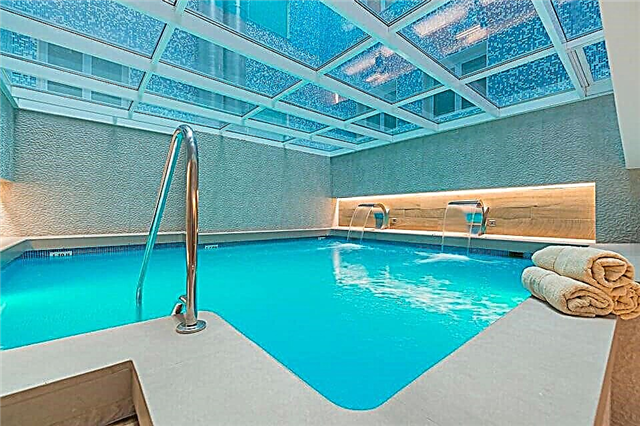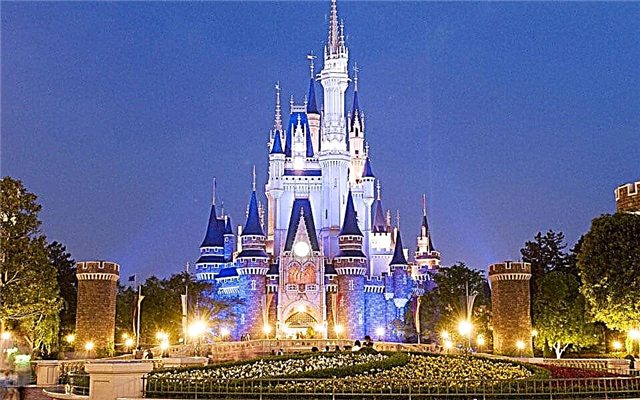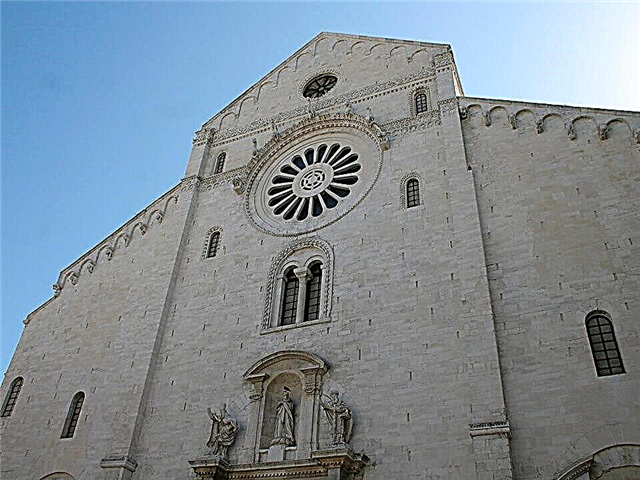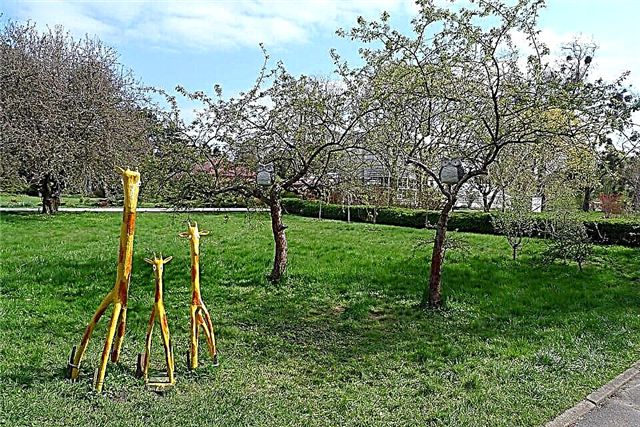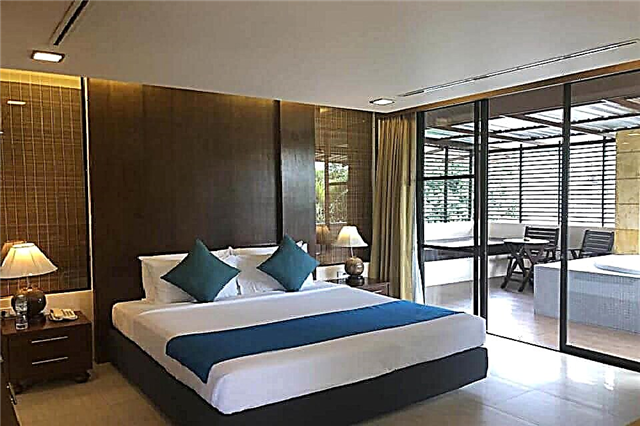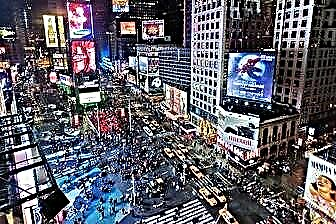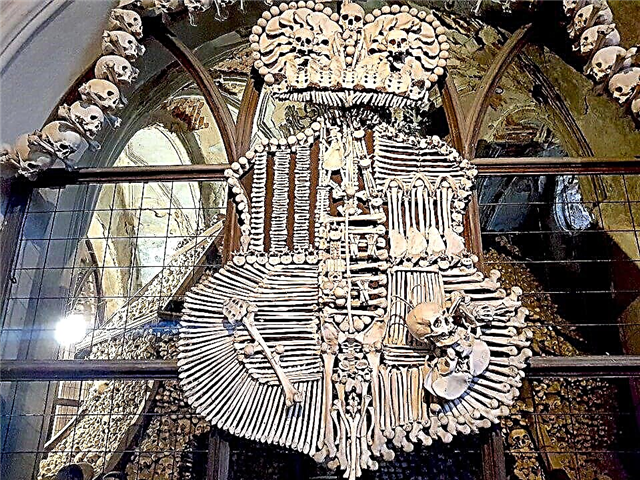An amazing city containing a huge number of ancient monuments, palaces, castles and monasteries - a kind of grandiose open-air museum. Its "expositions" can be viewed endlessly - there are so many interesting things in the beautiful Prague. However, not everyone can afford to stay here for a long time, and for those who are planning to spend several days in the city, this article recommends what to see in Prague in 3 days on their own, which routes will allow you to get better acquainted with the main Prague symbols.
First day
From the first minutes of your stay, you will not leave a feeling of happiness that you have the opportunity to see firsthand this beautiful city called "Golden Prague", walk along its cobbled pavements, contemplate the medieval buildings known to the whole world, famous monuments. In order not to waste time in vain, but to use it optimally, it is worth planning a busy route in advance, uniting significant objects located close to each other. Of course, first of all, you should visit the historical center, stroll through its squares and streets, see authentic towers and houses.
Wenceslas Square

The iconic place of the Czech capital cannot be ignored - Wenceslas Square. - "the heart of the city" through which thousands of streams of people and transport are "pumped" every day. The active life here beats over the edge; many restaurants and boutiques are open in the solid "wall" of ancient buildings. The oldest object of Nove Mesto, founded by Charles the 4th, the Horse Market became St. Wenceslas Square in 1848, whose statue was installed in the 17th century. Gradually, the Wenceslas Square turned into a place of mass gatherings and demonstrations of citizens and began to be ennobled in every possible way.
The magnificent architecture of the buildings surrounding the square will captivate you with its diversity and majestic beauty. The neo-Renaissance building of the National Museum with the Main Staircase and allegorical sculptures at the entrance, as well as the majestic equestrian statue of Wenceslas, will impress you. The palaces "Crown", "Europe", "Astra" - examples of neo-Renaissance, futurism and constructivism in architecture will delight you with their appearance.
Beer restaurant "Bredovsky dvor"
After a busy walk around the square, you can go to the branded beer restaurant "Bredovsky Dvor", located not far from the railway station. The institution is famous for the freshest beer poured into special tanks. Outwardly, this austere classic building of 2 floors is not very interesting, but it is very popular with tourists and locals.
Once inside the building, you find yourself in the setting of a typical medieval castle: vaulted ceilings, walls lined with gray stone. Only instead of torches and candle candelabra flames, electric lights are burning here, and the interiors are decorated in an eclectic style with the name T-shirts of Czech players.
In accordance with the purpose of the restaurant, the main drink in it is fresh beer, therefore, for its connoisseurs and connoisseurs, this is a real paradise. The beer is served with traditional dishes that have become classics of Czech cuisine: boar knee on a spit, fried pork ribs, venison kebab, original salads and delicious desserts. A visit to the famous beer garden will be a pleasure.
Jindříš tower

The same age as Nova Mesta The Jindříš Tower is a part of the temple complex of Saints Jindříška and Kuguta, which, in addition to a church building with a bell tower, included a cemetery, a dwelling house for clergymen, and a parish school. Everything was surrounded by a lush garden. The past centuries have changed this place, leaving a bell tower and a Gothic church rebuilt in the Baroque spirit as a keepsake for future generations.
Now it is difficult to imagine that the Jindříš Tower stands on the territory of a former cemetery, which no longer reminds of it here. The square-shaped stone structure is an invaluable monument of medieval architecture, built as a bell tower 67.5 m high. Carried out in the 80s of the 19th century. the reconstruction transformed the gothic appearance of the tower: the shape of the roof changed, corner turrets appeared along its edges, a clock was installed on the attic.
Now the medieval building plays the role of a modern leisure multifunctional center, in which the patriarchal atmosphere of antiquity is successfully combined with technology and entertainment of the 21st century. 1st floor - cafe, 2nd - exhibitions, 3rd and 4th - hobby clubs and dance floors, 5th - sanitary block, 6th - Museum of Prague Towers. By elevator (if there is no desire to walk the 200 steps) you can go up to the very top and see the panorama of the city.
Community house

A few minutes walk from the Jinříš Tower is the Public House, built on pl. Republic on the site of the old royal palace. It took 7 years to build it, during which a real architectural masterpiece was created by the hands of qualified specialists. The external design was intended to reflect the idea of the revival of the Czech people and the rise of the national spirit.
The facade of the building is decorated with a mosaic panel in the highly artistic performance of the artist Shpillar, the columns, connected by an openwork balustrade, give a ceremonial solemnity. The walls of the concert halls are also decorated in national cultural motives and bear the names of famous Czech composers.
Today, various music competitions, concerts of classical and jazz music are held here, exhibitions of works of art and objects of applied art are organized. You can visit one of them, look into a local cafe, have a cup of coffee.
Powder tower

One of the main attractions - the Powder Tower has an interesting biography. In the 13th century. it was the Powder Gate connecting the Old and New Places and was part of the system of defensive structures of the Old City. As the New Place developed, the gate lost its original meaning.
In the 13th century, the Royal processions of applicants for the crown and throne began from here, but gradually the Powder Gate was dilapidated, acquired a not very attractive appearance, and the inhabitants of the area began to call them "Stripped". This neighborhood did not flatter the inhabitants of the royal residence, so it was decided to demolish the former tower with a gate and build a new pompous structure called the New Tower in the 15th century.
The Powder Tower got its current name in the 18th century, when it served as a warehouse for storing gunpowder. Today, the historical and architectural monument, which has become a symbolic landmark, is popular with tourists admiring the intricate sculptural decorations. But these are not authentic medieval specimens, but the neo-Gothic decoration of the 19th century.
Old Town Square

After admiring the Powder Tower, you should go to the Old Town Square, another main Prague symbol that embodies the history and culture of the Czech Republic. This lively place is the "heart" of the Old Town, known since the 12th century as a market where artisans, merchants and craftsmen traded their goods.
Coming here, you will be fascinated not so much by the square as by its incredibly beautiful surroundings of all sorts of architectural masterpieces, represented by different eras and styles: from Gothic to Art Nouveau. It is here that the famous Prague sights, known to all the world, are concentrated. Authentic streets diverge from the Old Town Square in different directions.
Here you will not be able to pass by the Prague Astronomical Clock - an ancient striking clock decorated with symbolic figures of the 12 apostles of Christ, replacing one another in the clock windows.A special impression is made by the skeleton of a man with a bell in one hand and an hourglass in the other, symbolizing death. The majestic building of the Town Hall cannot leave you indifferent either.
The Charles Bridge

From the Old Town Square there is a direct road to the Charles Bridge connecting 2 districts - Stare Mesto and Mala Strana, the left and right banks of the Vltava. This legendary structure, overgrown with myths and beliefs, was erected to replace Judith's bridge, destroyed by a severe flood (1342). Some elements of the former crossing (a piece of the arch) are kept in the Charles Bridge Museum.
The more intensively the construction proceeded, the trade developed, the more acute the need for a new reliable crossing of the Vltava arose. The architect P. Parlerjou, known for the project of the Cathedral of St. Vitus, developed the construction of a grandiose bridge, which is, in fact, a masterpiece of architecture.
The fortress of the bridge structure is ensured by adding eggs, milk and cottage cheese collected by the population to the solution. Both bridge entrances (east and west) "guard" the towers. On one of them there is an observation deck, on the other, above the arched ceiling, there are shields depicting the coats of arms of the regions of the Holy Roman Empire. The parapets are decorated with baroque sculptures of famous Czech personalities and saints revered by the people.
Surprise seizes everyone who recognizes the 700-year-old age of the bridge, and admiration knows no bounds when tourists see sculptural masterpieces, including a statue of the heavenly patron saint of Czechs, Jan Nepomnutsky. Everyone traditionally strokes a bas-relief image of a dog, believing that a wish will come true.
Kafka Museum

It is unlikely that there is still such a mysterious, paradoxical person as the popular writer and philosopher F. Kafka. Several of his monuments in Prague are evidence of respect and worship for this figure. A surprisingly atmospheric, but somewhat strange feeling awaits you in the Kafka Museum, where almost at the entrance you are greeted by an odious couple of "pissing" young men.
The museum is housed in a squat building of a former brick factory. But the authors of the idea of creating the Kafka Museum were not Czechs, but a resident of Barcelona J. Insua, an employee of the Center for Contemporary Culture. He opened in 1999 an exposition dedicated to the mystical work of Kafka, which was later transported to New York, and in 2005 it was in Prague and acquired the scale of a museum.
Visiting the museum, you will form an idea of the most mysterious writer in the world, looking at black and white photos, laid out against the background of pebbles of the same shades, imitating a river through which natural water flows. A film showing Prague at the end of the 19th century. - the beginning of the 20th century. - the era between the wars, helps to fully reveal the worldview of the writer. Behind the museum building on the banks of the Vltava, swans swim, willingly taking food from the hands of tourists.
Wallenstein Garden

After walking 400 meters from the Kafka Museum, following the flow of tourists, you will find yourself at the Wallenstein Palace and Garden Complex, striking in its beauty and splendor. To create a man-made miracle in the 17th century, the best Italian architects and designers were involved, who embodied the ambitious plan of the wealthy Count Wallenstein.
The baroque beauty of the palace buildings competes here with the landscape and floral beauty of the unique garden. Of great interest is the "stalactite wall" built in the style of "garden mannerism". Everyone admires the artificial pond with a picturesque island in the middle, on which a statue of the sculptor A. de Vrieux is installed. Lots of sculptures adorn the cozy park alleys.
Walking along velvet lawns and other landscape wonders, you will certainly see freely walking peacocks of different colors of plumage, frolicking in the transparent water of "gold" fish, which you can not only feed, but also take pictures. The wonderful fountain pouring jets around the "bronze" Venus will cause admiration. The Wallenstein Palace complex is the only non-religious Baroque monument in the Czech Republic. Today it houses the Czech Senate.
Second day
If it seems to you that on the first day you saw the most interesting and Prague will not surprise you with anything else, then you are mistaken. This city conceals so many surprises within its borders that they will last for a long time.
The sights that are worth seeing on the second day reflect the glorious and tragic pages of history, age-old traditions of the Czech people in the best possible way. Squares, churches and monasteries, iconic beer halls are objects that have embodied different eras.
Prague Castle

A truly sacred place for Czechs is the same as the Kremlin and Red Square for Russians - Prague Castle, the most visited tourist site. Here, as in a drop of water, the sun is reflected, so in each of the museums and cathedrals the history and culture of the Czech Republic are reflected. In fact, this is a large architectural and museum complex, impressive in its magnificence and beauty.
It will be a great success to observe the changing of the guard at the gate, but even without this, an unforgettable experience awaits you from the walk when you see the Cathedral of St. Vitus Cathedral, St. George's Basilica, Rozmberg and Old Royal Palaces, Zlata Lane. Experience the cultural heritage of the past with a visit to the Treasure Exhibition and Art Gallery.
To make better use of your sightseeing time, it is best to join a guided tour. It runs along 3 circular routes - A, B and C. Each of them includes the most iconic sights. You can go through on your own, choosing what you like best.
Old castle stairs

Everyone ascends to the eastern entrance to Prague Castle along the Old Castle Staircase - a rarity of the 16th century, which connects Mala Strana and the Hradcany district. Although it is called old, it acquired its present appearance in the 30s of the 19th century. after major reconstruction. Every day, thousands of tourists climb and descend 121 historical steps.
Its length is 230 m, from 2 sides powerful steps enclose high stone walls. On the south side, behind the wall, there are gardens, and the Embassy of India is also located there. The northern wall fences off the former vineyards of St. Wenceslas, where he painstakingly worked, cultivating sun berries and making wine from them. The upper steps offer stunning, fabulous views.
Both walls are meticulously painted with bright yellow paint, one of which has handrails for added convenience. On the opposite side there are old-style lanterns that illuminate the stairs at night. Here is a monument to the talented Czech singer and composer, who combined many types of art in his work - Karel Hashlek.
Beer House "Behemoth"

A rather modest establishment, opened in 1994 on an inconspicuous street (parallel to the Royal Road), called the Beer House "At the Hippopotamus" (At Groh), quickly became a cult place for beer connoisseurs. Despite the absence of a centuries-old history, the pub is perceived by locals and tourists as an important attraction.
Probably, seeing from a distance a rather unpretentious sign of the institution and walls, you will be slightly disappointed. But looking inside, you will understand that in the cozy vaulted halls there is a special aura of warmth of communication between people with huge beer mugs in their hands. Interiors in the style of bygone eras create a retro atmosphere, simple, devoid of pomp.
Diverse visitors willingly visit the hot spot: ordinary hard workers and scientists, journalists and film critics like to spend several hours here enjoying excellent beer. Among the appetizers on the beer menu are traditional Czech dishes - fried ribs, pork knee and, of course, delicious pickled hermelin (cheese with white mold).
Lesser Town Square

The center of the historic district of Mala Strany - Lesser Town Square, which has preserved in many ways a unique view, conquers everyone with its appearance.In fact, this is a wide central street surrounded by architectural masterpieces, where authentic old buildings coexist with the latest in modern architecture. An active cultural and social life of the city is in full swing here.
Since the establishment of the Mala Strana settlement (10th century), its central square was called the "Italian parade ground", which served as the main market bridgehead. Various fairs were held here, shops were opened, and there was an active trade. Along with this, the square was the site of public executions, including the Hussites, during the famous uprising of which many buildings, reconstructed in the 17th and 18th centuries, were destroyed.
Lesser Town Square is an open-air museum where the main sights of the country are located. You will see the Church of St. Nicholas, built over 80 years and became a masterpiece of baroque religious architecture. You will be impressed by the Plague Pillar, erected as a token of gratitude to God for saving you from the plague. Many pompous palaces will amaze with their magnificence and scale.
St. Nicholas Cathedral

This is not just a cathedral, but the most beautiful architectural structure in Europe in the Baroque style, decorated with real works of stucco art and sculpture. Once upon a time, an early Gothic church was built on this site, instead of which the Jesuit order erected a majestic temple. The Jesuits' involvement in the construction is evidenced by the building of their college adjacent to the temple.
The huge (20 m in diameter) dome of the grandiose 80-meter structure is visible from afar. Coming closer, you will see the exquisite Baroque elements of the facade: the perfect statue of St. Nicholas in the upper central niche, parallel to it are the statues of the 4 Holy Apostles. In the bottom row there are sculptures of clergy revered in the Czech Republic. You can endlessly admire this masterpiece.
The interior decoration of the temple amazes with its magnificent luxury and brilliance of gilding, the artistic beauty of the wall frescoes (3 thousand square meters), the design of the altar and the number of works of art. Particularly impressive is the dome fresco "The Apotheosis of St. Mikulas" by the Viennese artist Kracker. An invaluable asset are 10 paintings by K. Shkret and the Crucifixion of Christ created by him, as well as 50 religious sculptures (Platzer's workshop).
Church of Our Lady Triumphant

On Karmelitskaya street in the district of Mala Strana, there is another monument of the Baroque era, known to the whole world - the Church of the Triumphant Mother of God. It arose in its present place as a result of the transformation of the Holy Trinity chapel into a Lutheran church, later transferred to the Order of the Discalced Carmelites (1624) after the victory of the Catholics over the Protestants, who believed that the icon of the Mother of God helped them in this.
The reason for the active pilgrimage of Catholics to the temple is the small figurine of the baby Jesus located in it, whose appearance is shrouded in legends. According to one of them, St. Teresa of Avila owned it, and then the statuette came to Princess M. de Lara, who presented the shrine to the Church of the Triumphant Virgin.

The miraculous power of the baby is evidenced by numerous inscriptions with words of gratitude left on the walls of the altar with the legendary statuette. Those who come here believe in the divine help of the wax figurine of the baby Jesus, with the right hand depicting a gesture of blessing, and with the left hand holding the "globe". The statues of the Virgin and Joseph are installed at the altar, in the upper part of it are depicted God the Father (a gray-haired old man) and the Holy Spirit in the form of a dove.
Petrin Tower

On the left bank of the Vltava there is an elevation - Petrin Hill, known for the fact that Perun was worshiped on it even during pagan times, and Princess Libuše predicted the appearance of the Czech capital from it. Later, during the reign of Charles IV, the hill acquired a strategic defensive importance for the city.
At the end of the 19th century (1891), after visiting Paris by Czech officials, a semblance of the Eiffel Tower was created on the hill. The opening was timed to coincide with the Prague Zemstvo Exhibition. The 60 m high structure was erected in 4 months with private donations.
The height of the hill makes the Petrin Tower higher than the Eiffel Tower in relation to the ground, so from its observation deck you can see an irresistible panorama of the entire Czech capital. You can climb to the observation decks either by stairs (299 steps) or by elevators. The easiest way to get to the hill is to take the funicular located at the foot of the hill. If you go by tram in that direction, then stop Ujezd.
Strahov Monastery

The oldest monastery with the eloquent name of Strahov was built in the 12th century on the site of a border outpost that guarded the city. The monastery still belongs to the monks-premonstrants (observance of the vow of silence and celibacy). The monastery has undergone repeated rebuilding, and has not survived in its original form, but it is considered the earliest Christian building in Bohemia.
Coming here, you will immediately notice the solid scale of its buildings, their rich equipment. One has only to go to the Church of the Assumption of the Virgin Mary and see its magnificent decoration: gilded stucco decorations, expensive sculptures, carved furniture. On the territory of the monastery there are many warehouses, barns for storing crops.
It has its own brewery, which produces a quality drink "St. Norbert" (his ashes are buried in the monastery). You can taste the branded beer by visiting the Strahov Monastery brewery. Only a table should be booked in advance before the start of the tour - there are always a lot of tourists here.
A visit to the huge library will be a real shock for you in the best sense of the word. It is not so much its size that is impressive as the number of folios, books, and manuscripts stored in it. For 3 centuries, a solid collection of paintings has been collected here, an art gallery has been opened. The Strahov Monastery library is its real gem.
Prague Loreta

If you thought that you saw all the architectural masterpieces, then once you find yourself at the Prague Loreta building, you will understand your delusion. The magnificent structure, shining with external beauty, will overshadow previous impressions. Prague Loreta is an internationally recognized religious and architectural monument of the Baroque era, which has embodied an old legend.
In Christianity, there is a legend about the holy hut of the Virgin Mary, in which she lived in Nazareth before the birth and after the death of Christ. The angels moved the hut to a laurel grove near the Italian town of Loreto, hence the name of the Catholic sanctuaries that arose in many European cities.
The house itself, symbolizing Loreta (hut), is located in the center of the grandiose complex. For its incredibly luxurious and rich design, it is unofficially called "a pearl in a box". Skillful bas-reliefs (stucco technique), an altar made of pure silver, a valuable relic - a wooden sculpture of Lorethan Mary (17th century), highly artistic paintings - everything amazes the imagination.
Hradcanska square

A visit to the famous Hradcanska Square, located at the Prague Castle (in front of the main entrance), will be a great addition to your acquaintance. It is here that the daily solemn changing of the guard takes place, guarding the presidential residence; the most beautiful Prague palaces are concentrated here.
Each of the luxurious palaces is a memorable masterpiece of a particular style of architecture and unique beauty. The largest Schwarzenberg Palace, for example, reflects the Renaissance era. Salmovsky embodies medieval Gothic, the magnificent grace of Rococo is reflected on the facade of the Archbishop's Palace. Baroque elements adorn the Sternberg Palace.
Mariana Column

An example of the high art of sculpting and casting - the Column of the Virgin Mary, erected as a token of thanksgiving for salvation from the plague, is always surrounded by people. This religious symbol is installed at the site of long-term services and prayers. The top of the column is a 2-meter statue of Mary, the pedestal is a sculpture of the patron saints of the Czech Republic.
The third day
For 2 days full of sights, you can get tired of the kaleidoscope of palaces, museums, temples, so the 3rd day is worth emotionally and geographically unloading. The Czech capital is surrounded by a necklace of beautiful old castles, atmospheric sites and picturesque spas. Below you can choose from some of them. During the trip along the chosen route, you will have time to rest and calmly explore the object.
Melnik Castle

In 30 km from Prague, in an unusually picturesque place, there is the ancient Melnik Castle, in which (the only one in the country) the descendants of the Counts Lobkowice still live. The symbol of splendor, nobility and wealth of yesteryear attracts crowds of tourists. From the first steps through the castle premises, you find yourself in the atmosphere of the mysterious Middle Ages, luxurious halls, glittering dining rooms, intimate comfort of bedrooms and mysterious inner corners of the castle, shrouded in legends.
The past centuries are embodied in the collections of paintings, hunting trophies, glassware and exclusive furniture. A crawl is open for visits, in the second half lives the family of Count Lobkowitz, who sometimes accompanies tourists himself. You will hear extraordinary stories from the life of previous generations, see unique collections of perennial wines, family treasures and relics.
Castles Karlštejn and Konopiste

Immersion in the atmosphere of medieval splendor and magic during a visit to 2 famous castles Karlštejn and Konopiste will be no less interesting. A lot of the most unexpected and pleasant experiences await you during the day.
Karlštejn Castle. Such a powerful and at the same time pompous fortress could have been built (1348) by the great Czech king and Roman emperor in one person - Charles IV. You will have a rare opportunity to see authentic wall paintings of the 14th century, unique portraits of the rulers of Bohemia, a collection of paintings on wood by Theodoric, a copy of the royal crown of St. Wenceslas.
Wonderful early Gothic look, the French-style Konopiste castle transports you into the romantic era of chivalry. It received its current appearance through the efforts of the famous Franz Ferdinand. Here you will be presented with a rich collection of ancient weapons and armor, hunting trophies, paintings, porcelain, chandeliers. The beauty of the English park will amaze your imagination.
Sychrov Castle

Despite the fact that Sykhrov is located 100 km from Prague, it is worth going there to find yourself in a real fairy tale created there by the family of Duke K. Rohan in the 19th century. Today, this beautiful property is owned by the state and is a popular tourist attraction. The landscape design of the magnificent park amazes with the beauty and variety of forms, the richness of flora and garden structures. A unique alley of pyramidal oaks leads to the local church.
There is an arboretum with greenhouses where rare plant species are grown. The main building of the baroque castle is admirable. A stone cylinder of a water tower, a greenhouse building in the spirit of the Italian Renaissance, Arthur's castle - 2 cylindrical towers connected by an arched vault are impressive on the territory of the park. Touches the presence of a dovecote in a rustic format.
Orlik castle and Velkopopovice goat

An amazing monument of ancient fortress architecture - Orlik Castle, founded in the 12th century, is located on a cliff above the Vltava. It was built as a security post at the intersection of the river, which was subject to a duty. Since its foundation, the appearance of the castle, which has belonged to the Schwarzenberg princes for 3 centuries, has changed several times. The main exposition of the castle museum is the history of the merits and achievements of the representatives of the princely family of the Schwarzenberg.
There are many different awards, firearms, gifts from noble monarchs, armor of knights, unique stained-glass windows of ancient work. Velkopopovetsky Kozel is a famous beer brand, familiar to the whole world. Interesting is the unusual name of the beer, about the main character - a bearded goat from Velke Popovece, many anecdotes and legends have been composed. During your visit, you will see a live goat, which has become a symbol, and enjoy the taste of an elite drink.
Cesky Krumlov and Hluboka nad Vltavou castle

A truly fabulous town and the eponymous castle of Cesky Krumlov (southern Bohemia), included in the UNESCO heritage list, was founded in 1242. First, the castle grew up, and then "overgrown" with a town that retained the captivating appearance of antiquity. In its authentic streets, the charm of patriarchy is harmoniously combined with modern technological advances.
Annual celebrations of the 5-petal rose are held here, during which you can take part in a massive theatrical performance. The town also has its own brewery where Yeggenberg beer is brewed. You can dine in the cozy atmosphere of a restaurant on the banks of the Vltava River against the backdrop of charming landscapes.
This snow-white masterpiece of architecture is the most beautiful castle in the country. Built in the 13th century in the Gothic style, it was transformed in the 19th century. by analogy with the English Windsor Castle, acquiring the features of romantic Gothic. The external beauty of the castle, the surrounding park, natural landscapes fascinates the eye and delights to the depths of the soul.
Moravia

The Moravian Lands are a paradise in the Czech Republic with the most beautiful cities, ancient castles, rich vineyards, health resorts and ski resorts. Visit these serenely calm lands, plunge into the atmosphere of the ancient homeland of the Slavs, where Celtic tribes lived, the creators of the first alphabet, Cyril and Methodius, where the first Slavic state arose. On a trip across Moravia, you will see landscapes of unearthly beauty, majestic castles and fortresses, ancient cities.
Visiting Brno, Olomouc, Zlín, Vizovice you will see the Cathedral of Saints Peter and Paul, the Church of the Holy Cross, the Church of St. Maurice, the Church of St. Michael (Olomuots), St. Philip and Jacob (Zlín). The lands of Moravia are rich in wonderful forest parks: Moravian Kras, Litovelske, Pomorave, Litovelske enchant with the beauty of the flora. Ancient castles: medieval Buchlov, Renaissance masterpieces from Lednice and Slavkov architecture, Pernstein Gothic, Mikulov and Kromeriz baroque style embodiment will be remembered for a long time.
Karlovy Vary

Staying in the Czech Republic and not visiting the famous Karlovy Vary is unforgivable nonsense. After all, this resort is not only a place of recovery, but also a favorite city of many great personalities, inspired to work by its enchanting views and special atmosphere of the 19th century. On the way, in a comfortable bus, you will hear a fascinating story about the history of the resort. You will walk along the streets where Peter I, Goethe, Beethoven, Chopin, Pavlov, Gogol, Turgenev, Tolstoy and other famous classics of music and literature walked.
Walking along 12 drinking colonnades, you will taste the Karlovy Vary mineral water, as well as the famous Becherovka, a famous herbal liqueur. At the Krušovice Royal Brewery, you will watch the brewing process and taste it, as they say, “hot, hot”. In one of the cafes, treat yourself to the "calling card" of Karlovy Vary - hot waffles. Shopping in local shops will allow you to purchase other souvenirs of the resort: crystal products, a couple of bottles of Becherovka, unique salt-based creams.
Reserve "Bohemian Paradise"

To the north-east of Prague there is an unusually picturesque area with pristine forests, virgin rocks, not accidentally called "Bohemian Paradise". This is a well-lived region with many small, clean towns, where provincial life slowly flows in each of them. Ancient mini-castles and tiny churches are witnesses of bygone eras. Among the protected objects of an amazing kind are rocks in the form of huge boulders, giant boobies, elliptical balls.
One of the sections of the reserve, which contains massive, roughly hewn rocks, is called Gruboskalsko. There are Prahovsky, Adrshpash rock formations - an interesting sight. A visit to the Bazkovsky caves (north of the reserve) with stalactites and stalagmites illuminated by lamps will be very impressive; underground lake with clear blue water. On the territory of the Bohemian Paradise there are interesting hiking trails that reveal the natural wonders of the reserve.
Kutna Hora, Kostnica, Sternberg Castle

You will experience the strongest impressions if you go along the route Kutná Hora - Kostnice - Sternberg Castle. Kutná Hora is a place of silver ore mining since the 13th century, the Mint (14th century) and the richest city in the Czech kingdom. Numerous monuments and temples were opened in it. The majestic Cathedral of St. Barbara, built for 5 centuries, is a symbol of the town of Kutná Hora, as well as the Plague Column, the Stone Fountain, etc.
The main attraction of Kutná Hora is the Chapel of All Saints, otherwise called the Ossuary. You will learn how this extraordinary chapel came about, where everything is made of human bones. When the local cemetery was overcrowded and it was decided to liquidate it, the bones began to be dug up, washed, cleaned and taken to the underground storage of the church.
An ancient Gothic castle located on a high rocky bank of the river. Sazavs, belonged to the richest noble family Sternberg. It was built as an impregnable fortress capable of withstanding a long siege. The interiors of the castle contain wonderful collections of paintings, prints, furniture, unique porcelain and make an irresistible impression.
Saxon Switzerland

A trip to the national park of Germany - Saxon Switzerland will give you untold pleasure from contemplating the extraordinary mountain-forest landscape, natural and man-made sights. Even a few hours stay here will give a positive emotional charge and physical health. The most popular tourist attraction is the Bastei mountain gorge with the eponymous high rock 200 m rising above the Elbe.
Stunning landscapes opening from the symbolic "Trail of Artists" attract a lot of painters and photographers here. The object of your attention will be the stone monolith bridge of the same name, laid out between the rocks. The amazing 10-meter high rocky Kushtal gate is another amazing invention of nature that will amaze you with its size. The ruins of a medieval fortress "doze" above them. On the Kirnichtal narrow-gauge railway, tourists come to admire the Lichtehain waterfall, where the "artists' trail" ends.
And useful advice from us on how to get from the airport to the city center: Do not rush to order a taxi, from here you can get by public transport sometimes even faster than using it. It is possible in 50 minutes. take a bus (2.3 €) or Aeroexpress (high-speed bus) for the same price in 45 minutes. Group shuttle - 11 €. But you have to pay in Czech crowns. A taxi - 28 € is convenient for the elderly, for families with babies and the disabled - delivers to the hotel.
Book a private transfer from the airport to your hotel for RUB 2 042

